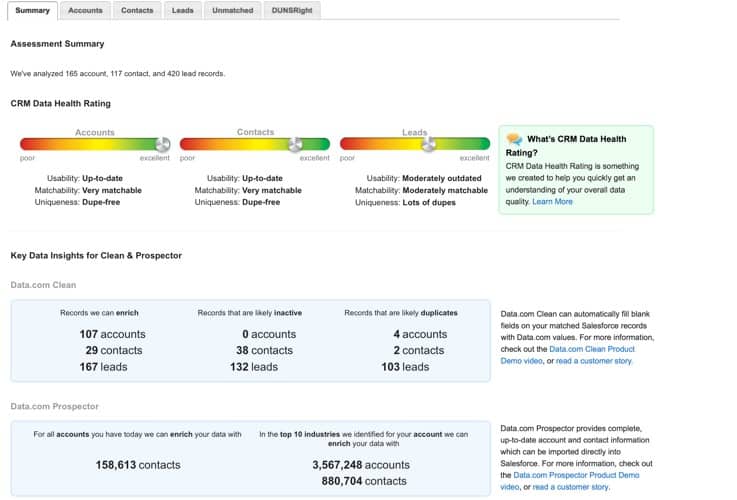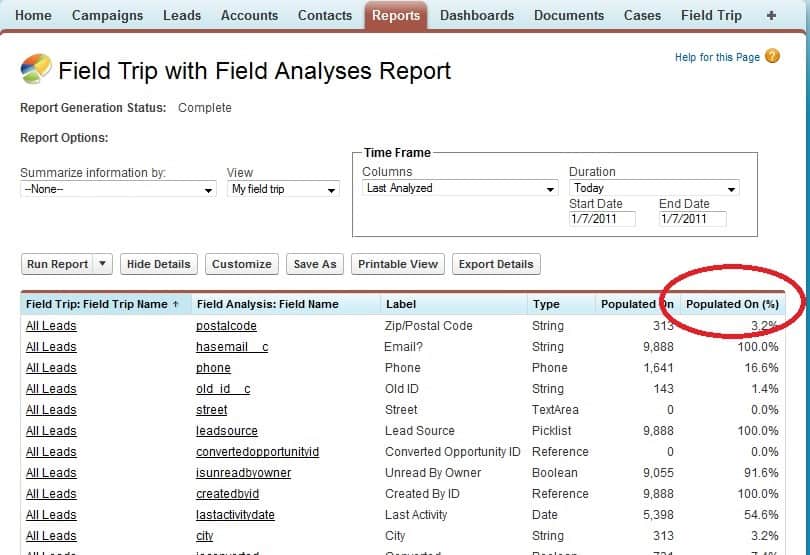Stepping Stones Toward a Data Governance Framework, Part I
Salesforce administrators play a special role in companies: you have the opportunity to bring teams together to focus on what is most important to them – the customer.
Just one problem – How can we focus on the customer if we don’t know who the customer is?
You would be surprised how many companies cannot easily pull a list of their customers from Salesforce because of poor data quality. If this pain is all too real, let us help you. After years of research, meetings, Dreamforce® sessions, not to mention trial & error, we can get you pointed in the right data quality direction.
Step 1: Do your Homework
You are not going to be able to solve this issue yourself, but before your company dedicates resources to the data quality problem, you need proof that one exists. Let’s look at some tools to help you build your business case…
There are a number of apps on the AppExchange® that can be used to run an analysis of your Salesforce data. Use an app, like Data.com Assessment, to capture important metrics needed to call your company to action. How many records are duplicated or incomplete? If the results aren’t enough to make your stakeholders scream, try converting the numbers into dollars. This slide deck, The Cost of Bad & Clean Data by RingLead, will help you put the problem in terms your stakeholders will understand.

Qandor™’s Field Trip, a free app on the AppExchange, will show how often your Salesforce fields are populated. Based on your results, group fields into three buckets: keep, investigate, remove. If a field is populated 70% or more, keep the bucket. If a field is populated 30%-70% of the time, investigate bucket. If it is less than 30% populated, remove bucket. Don’t go deleting fields now, remember we are just gathering selling points. We will discuss what to do with these field buckets in other sections.

Ride Along
To understand data challenges, it is best to step into the end user’s shoes. You may not realize the content needed for a required field isn’t discussed in the first phone call, that the right pick list value isn’t available, or that the field name is confusing. Choose a handful of end users, in varying roles and skill levels, and observe how they use Salesforce. Ask the following questions:
- What was the flow of their customer interaction?
- What steps are cumbersome in the system?
- What steps are easy that you could use elsewhere?
- Did they use fields from the investigate bucket? Why or why not?
Finally, make sure to capture the opinion an end user has about using Salesforce.
Now, let’s pull together what we have learned to present a business case. First, show them the results from your data and Field Trip analysis to prove there is a problem with your data. Second, make recommendations to improve using your bucketed fields and ride along results.

In Part 2 of our blog series, we will discuss the next step on how to build your team of cross-functional data heroes that will be critical to your data quality success. Stay tuned!


